Deep within the mist-shrouded peaks of ancient Japan, nestled among the serene landscapes, lies the mythical Shrine of Onitama. Steeped in centuries of tradition and wisdom, this hallowed sanctuary is where aspiring warriors from martial arts schools come to hone their skills under the guidance of respected Masters. Within the sacred grounds, these Masters and their promising disciples aim to demonstrate their martial prowess and prove their superiority against all who challenge them. Here is our review of the Onitama board game!
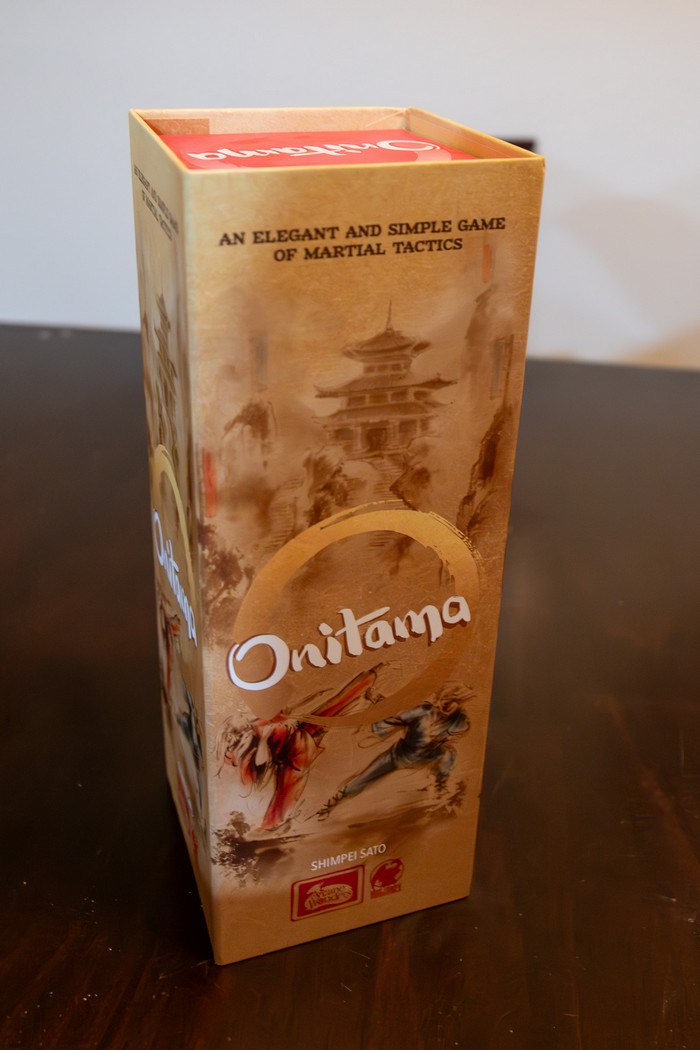
Players: 2 Players | Time: 15-30 Minutes | Ages: 14+
Onitama mirrors chess in that it’s a strategic game for two players, aiming to either capture the opposing Master or navigate your Master to the starting position of the opponent’s Master to claim victory. This game is excellent for those who enjoy tactics, strategy, and cunning.
How To Play
“An elegant and simple game of martial tactics”
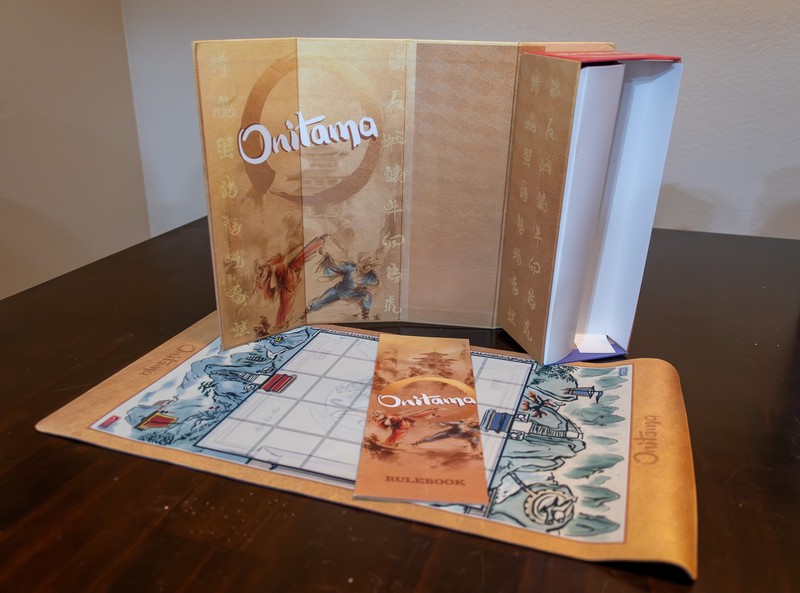
The box itself is beautiful and opens at the side with magnets. Everything inside is compact and includes an instruction rulebook with concise rules for entering the game. The rulebook reads quickly, and the game has an air of lore on each page with quotes from “The Book of Heaven,” which I thought was a nice touch.
Step 1:
Each player has one Master pawn and four student pawns to place upon the roll-up game mat. The illustrations in the rulebook show players how to set up the game correctly. Place the pawns in their designated color temple arches. Then, shuffle the 16 Move cards and deal two random cards to each player, face up. Another Move card will be placed face-up, depending on the matching color of the “Arcane Wonders” logo on the bottom right to the player’s pawn color, which player will go first.
Move this same Move card to the right side of the game mat; after completing this step, you can put away the other Move cards until the next round! Players move their pawns or Master based on the two Move cards they have face up before them. The square grid on your cards demonstrates the moves you can make. The darkest square is your “Start Square,” or the piece you will be moving, and the lighter gray squares are the tiles your pawn can move. Pawns cannot leave the game mat or return to the same square as their fellow student pawns.
When your pawn moves to a square occupied by your opponent’s pawns, you “capture” that pawn, remove it from the game, and return it to the box. You cannot move through or over spaces to capture an opponent’s pawn, so think of this as a landing blow. But choose wisely when moving your pawns because you will exchange cards with your opponent.
Step 2:
With the Move card you just executed, place it on the left side of the playmat, moving it to face your opponent. Next, take the card to the right of the playmat and add it before you. Now you have two Move cards again for your next turn. Your opponent will follow the same steps as above: play a Move card and then move it to the left side of the playmat, continuing this card share and exchange in a clockwise rotation.
The Move cards are predetermined moves each player can make, but they require some strategy. Players can only think two moves ahead before cards are rotated and moved. The card you play could be the card your opponent needs to move and take your Master, so choose wisely.
Step 3:
There are two ways to win the Onitama game. The Way of Stone requires you to capture your opponent’s Master pawn, and the Way of the Stream requires you to move your Master pawn into your opponent’s Temple Arch space. This might sound easy, but this game will test your cunning and strategy.
The Review
Onitama is a two-player game, but my four friends had a blast taking turns and watching the strategy and clever moves unfold. Our first round took around 12 minutes, learning from the rulebook, which only took one time to read and fully understand. Setting up and following the exchange of Move cards was straightforward. Once we became familiar with them, we kept certain Move cards to keep our opponents from capturing pawns, especially the Master.
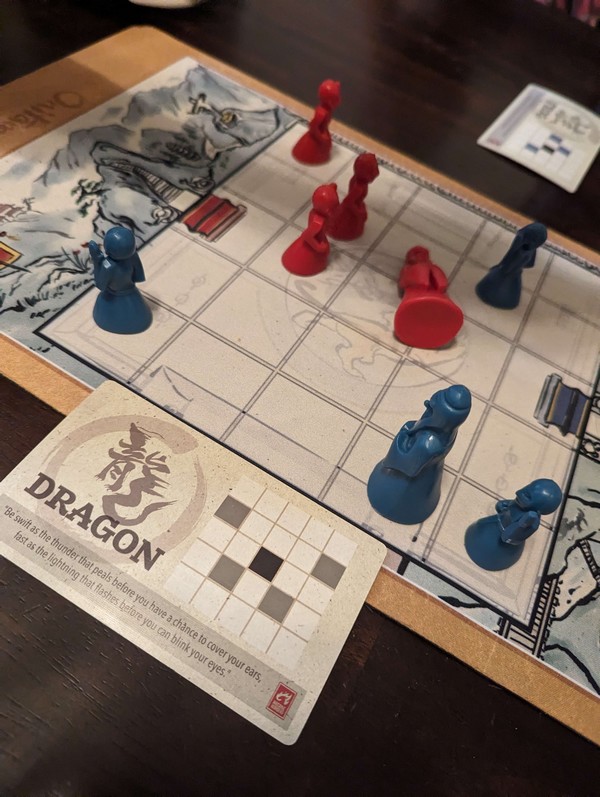
It was fun to be a player but also spectate when new Move cards were shuffled and used in a new game. Some cards, like the Dragon, offer more space and “jumps” across tiles, while others, like Ox, are more close-knit and perfect for personal and close captures. Players became more calculating as the game reached fewer pawns and neared its critical end. They demonstrated their strategy in what cards they were using to hold on to other Move cards for future moves (which was my favorite to execute). Players also found that announcing their chosen card before placing the Move card to the side of the mat helped others understand their move better.
One of the players, a huge chess fan, mentioned that he found this game even more enjoyable due to its dynamic nature.
Verdict
After playing for around 60 minutes with multiple rounds accomplished, we put Onitama to rest. The game was delightful, and my friends loved its ease and pace. I am intrigued to try the card expansions at some point. The Sensei’s Path provides 16 new Move cards to add to the base game or as standalone cards, which gives players more room to make card combinations, meaning there are multiple ways to play Onitama and endless hours of fun for multiple occasions.
Special thank you to Arcane Wonders for providing a copy of the game for this review.

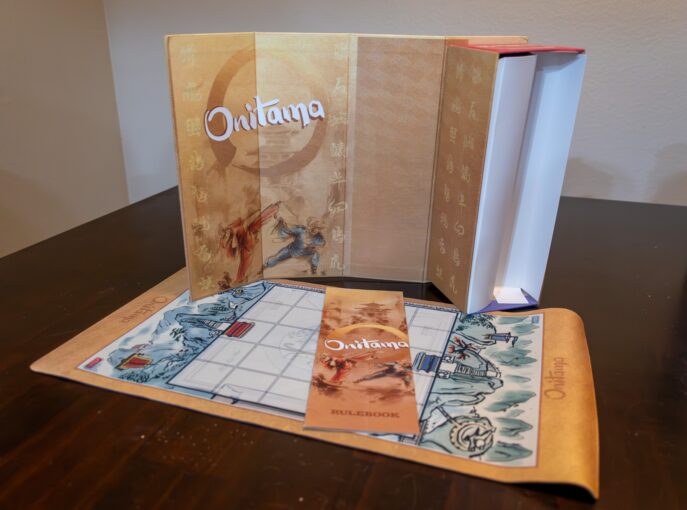
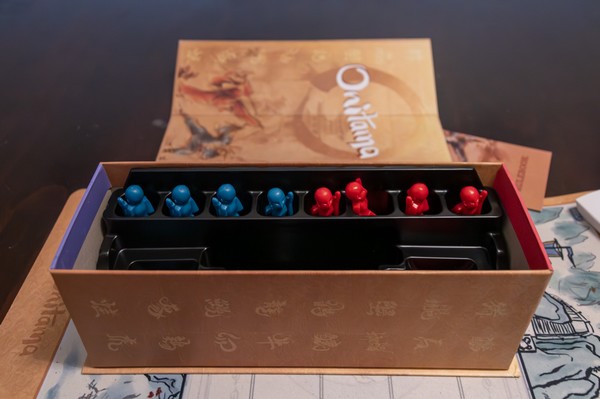
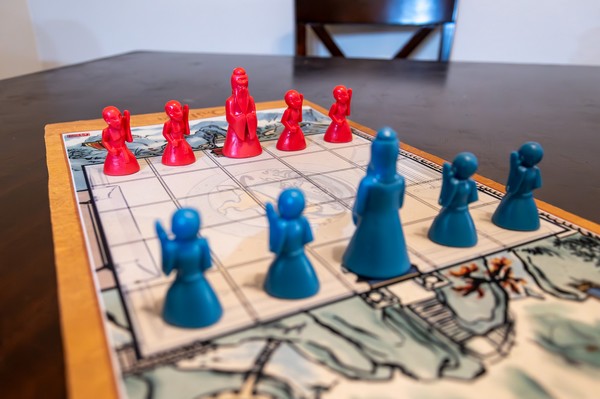
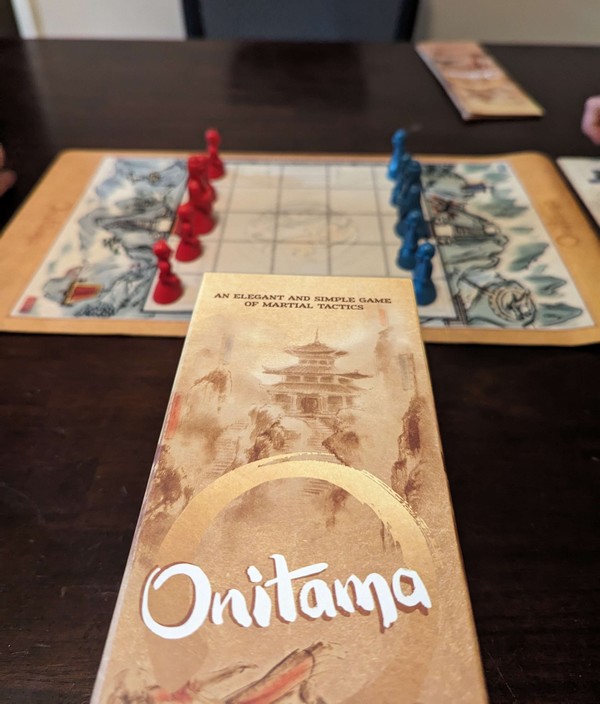
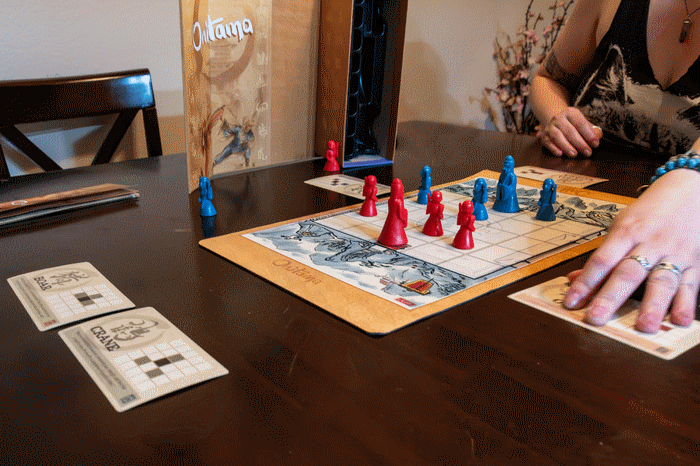








2 thoughts on “Onitama Board Game Review”